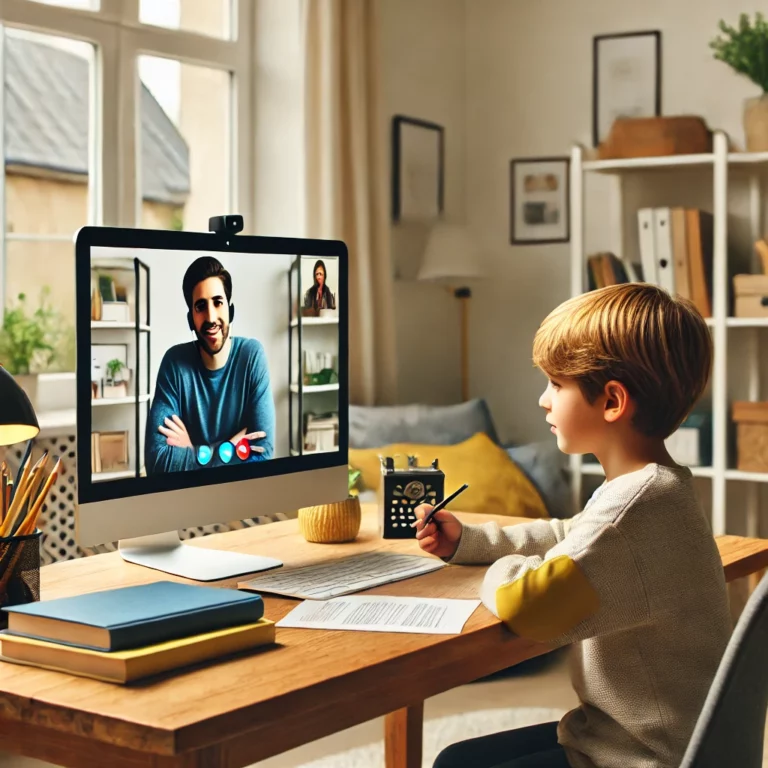Introduction
Telehealth for kids is a convenient option for mental health treatment, offering video calls, phone sessions, and text chats. With the increasing demand for mental health services and the advancements in technology, telehealth has emerged as a viable alternative to traditional in-person therapy. This approach provides numerous benefits for children and their families, making mental health care more accessible and flexible.
In this blog post, we will explore the advantages and drawbacks of telehealth for kids, discuss insurance coverage, and provide practical tips for successful telehealth sessions. We will also examine the importance of preparation, privacy concerns, and the role of mental health professionals in delivering effective remote care. By understanding the various aspects of telehealth, parents and caregivers can make informed decisions about their child’s mental health treatment.
The Benefits of Telehealth for Kids
Convenience and Comfort
Telehealth for kids offers several advantages, including no travel, comfort of being at home, and availability for most mental health conditions. One of the most significant benefits is the convenience it provides. Parents no longer need to take time off work or arrange transportation to attend therapy sessions. Instead, children can receive care from the comfort of their own homes, reducing stress and making it easier to fit therapy into their daily routines.
Additionally, telehealth can be particularly beneficial for children with anxiety, autism, or other conditions that make in-person visits challenging. The familiar home environment can help children feel more at ease, leading to more effective therapy sessions. Moreover, telehealth services can address a wide range of mental health conditions, from anxiety and depression to eating disorders and ADHD, making it a versatile option for many families.
Insurance Coverage and Accessibility
Insurance companies are increasingly covering telehealth therapy for children, but it’s important to check with your provider. As telehealth becomes more mainstream, many insurance providers recognize its value and have started to include it in their coverage plans. This increased coverage can make mental health services more affordable and accessible for families who might otherwise struggle to afford in-person therapy.
Furthermore, telehealth expands access to care for children in rural or underserved areas where mental health professionals may be scarce. By removing geographical barriers, telehealth ensures that more children can receive the mental health support they need. However, it is crucial for parents to verify with their insurance providers to understand the specifics of their coverage and any potential out-of-pocket costs.
Potential Drawbacks of Telehealth
Limitations and Challenges
Drawbacks of telehealth for kids include limitations in reading body language, privacy concerns, and potential tech issues. While telehealth offers many benefits, it is not without its challenges. One significant limitation is the difficulty in reading non-verbal cues and body language through a screen. These cues can be essential for therapists in understanding a child’s emotions and reactions, potentially impacting the effectiveness of the therapy.
Privacy concerns also arise when conducting telehealth sessions from home. Ensuring a private and distraction-free environment can be challenging, especially in busy households. Parents need to take steps to create a confidential space for their child’s sessions to maintain the integrity of the therapy.
Technical Issues and Solutions
Potential tech issues, such as poor internet connection, software glitches, or unfamiliarity with the technology, can also hinder telehealth sessions. These technical problems can disrupt the flow of therapy and cause frustration for both the child and the therapist. To mitigate these issues, it is essential to test the software and internet connection beforehand and have a backup plan in place.
Parents and caregivers can help by ensuring that all necessary equipment, such as a computer, tablet, or smartphone, is set up and functioning correctly. Familiarizing themselves and their child with the telehealth platform can also make the process smoother and more comfortable.
Preparing for Successful Telehealth Sessions
Importance of Preparation
Preparation is key for successful telehealth sessions, including explaining the process to your child, ensuring privacy, and testing software. Proper preparation can make a significant difference in the effectiveness of telehealth therapy. Parents should take the time to explain to their child what to expect during the session, addressing any concerns or questions they may have.
Ensuring privacy is crucial for maintaining the confidentiality and comfort of the child. Setting up a quiet, private space for the session, free from interruptions and distractions, helps create a conducive environment for therapy. Additionally, testing the telehealth software and internet connection ahead of time can prevent technical issues and ensure a smooth session.
Flexibility and Support
Telehealth allows for flexibility in scheduling, comfort for children, and direct support for specific activities like eating disorders. The flexibility of telehealth means that therapy sessions can be scheduled at times that are most convenient for the family, reducing the need to rearrange other commitments. This flexibility can lead to more consistent attendance and better outcomes.
For children with specific needs, such as those with eating disorders, telehealth can provide direct support in their home environment. Therapists can observe and guide children through real-life situations, offering immediate feedback and support. This approach can be more practical and effective than traditional in-office therapy.
Maximizing the Benefits of Telehealth
Effective Session Management
Setting clear boundaries, doing trial runs, and staying focused are important tips for maximizing the benefits of telehealth. Establishing clear boundaries around telehealth sessions, such as designated times and spaces for therapy, helps create a structured routine for the child. Conducting trial runs can help identify and address any potential issues before the actual session, ensuring a smoother experience.
Staying focused during the session is essential for both the child and the therapist. Minimizing distractions, using headphones, and ensuring a quiet environment can help maintain concentration and improve the effectiveness of the therapy.
Adapting and Supporting
Providing support, completing homework assignments, and adapting sessions as needed are crucial for successful telehealth treatment for kids. Parents can support their child’s therapy by reinforcing the skills and strategies learned during sessions. Completing homework assignments and practicing techniques outside of sessions can enhance the child’s progress and help solidify new skills.
Therapists may need to adapt their approach based on the child’s response to telehealth. This flexibility can involve adjusting the session format, incorporating different activities, or providing additional resources to support the child’s needs. Open communication between parents, children, and therapists is key to making these adjustments and ensuring the success of telehealth therapy.
Addressing Privacy and Cybersecurity Concerns
Ensuring Privacy and Confidentiality
Lack of privacy at home and potential tech issues are common challenges in telehealth sessions for kids. Maintaining privacy and confidentiality is a top priority in telehealth. Parents should take steps to create a private space for therapy sessions, such as using a separate room and ensuring other family members are aware of the need for privacy.
Additionally, therapists should use secure, HIPAA-compliant telehealth platforms to protect the child’s information. Understanding and adhering to HIPAA guidelines helps ensure that the child’s privacy is safeguarded during telehealth sessions.
Cybersecurity Measures
Cybersecurity measures are essential to protect sensitive information during telehealth sessions. Using strong, unique passwords for telehealth accounts, enabling two-factor authentication, and keeping software up to date can help prevent unauthorized access. Parents and therapists should be vigilant about potential cybersecurity threats and take proactive steps to secure their devices and networks.
Educating children about online safety and the importance of keeping their personal information private can also help mitigate cybersecurity risks. By fostering a culture of security and awareness, families can protect their child’s mental health information during telehealth sessions.
Conclusion
Telehealth for kids offers a convenient and effective option for mental health treatment, providing numerous benefits such as flexibility, accessibility, and comfort. However, it also comes with challenges, including privacy concerns and technical issues. By understanding the advantages and drawbacks of telehealth, preparing adequately, and addressing privacy and cybersecurity concerns, parents and caregivers can ensure successful telehealth therapy for their children.
Telehealth represents a valuable tool in the modern mental health care landscape, particularly during times when in-person visits may not be feasible, such as during the coronavirus crisis. By embracing this technology and working closely with mental health professionals, families can provide their children with the support they need to thrive.



